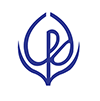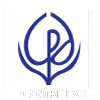Originally posted in The Business Standard on 14 May 2025
Shift to market-based exchange rate regime – what does it mean for the economy?
Central bank will keep intervening in the forex market through dollar buy-sell and a currency band will be maintained

After much speculation, the Bangladesh Bank finally announced a shift to a market-based exchange rate regime, allowing market participants to trade dollars at freely negotiated rates, in line with conditions set by the IMF.
However, there will be an undisclosed band within which the exchange rate must stay.
At the same time, the Bangladesh Bank will continue to intervene in the foreign exchange market by buying and selling dollars.
The announcement came at a press conference held on Wednesday (14 May) on the Bangladesh Bank premises when Governor Ahsan H Mansur confirmed that Bangladesh will receive $1.3 billion loans from the IMF under the $4.7 billion loan package by the end of June.
He said a staff-level agreement has already been signed with the IMF, which will be placed before the IMF board at the end of June for final approval.
One of the IMF’s conditions was to implement a more flexible exchange rate before the board meeting.
The exchange rate remained stable at Tk122.50 on the day of the announcement.
A market-based exchange rate is expected to bring more transparency to the foreign exchange market, boosting foreign investor confidence. It is also expected to encourage exports and remittances. However, if the dollar price rises, it could increase import costs and push up inflation.
The governor said bankers were already informed about the move in a meeting on Wednesday. He added that Bangladesh Bank will provide support in the case of large foreign payments to keep the exchange rate stable.
“We will remain cautious so that some Dubai-based companies cannot manipulate the exchange rate,” he said.
“We will strengthen monitoring on forex trade to stop foul play by aggregators,” he added.
Explaining how the exchange rate will be monitored, he said banks will have to submit their buy-sell rate to Bangladesh Bank twice in a day.
He clarified market based exchange rate does not mean that Bangladesh Bank will completely withdraw from the market and that anyone can quote any rate. Rates must be rational and based on demand and supply.
He urged all market participants to remain cautious so that no foreign companies can destabilise the market.
Impact on the market
Professor Mustafizur Rahman, distinguished fellow at the Centre for Policy Dialogue (CPD), told TBS that the shift to a market-based exchange rate is not expected to have a major immediate impact on the economy.
“If the Taka does not appreciate or depreciate significantly, there will not be a big impact,” he noted, adding that the difference between the kerb market and the official dollar rate is currently minimal.
He said if dollar demand rises sharply, it could affect the exchange rate. “At what stage the central bank will intervene will be determined by the central bank. As a market player, it will then sell dollars. At that point, we will need to assess the central bank’s capacity,” he added.
“We must consider two things here: first, the state of reserves; and second, the level of import demand. The risk is if dollar demand increases sharply – how will the central bank handle it? However, as the supply side of dollars is currently strong, the risk on the demand side is relatively low.
“So, the central bank must closely monitor the market and make sure speculation does not get out of hand,” he advised.
How prepared is the economy?
When a country adopts a free-floating exchange rate, the value of its currency can be influenced by market sentiment. If the market perceives the country’s economy is strong, the currency may appreciate. This can attract investors seeking to take advantage of the potential for higher returns, leading to increased demand for the currency and capital inflows. These inflows are then converted into the country’s currency and can be used to build up forex reserves.
Earlier in December 2024, the Bangladesh Bank issued a circular allowing players to trade dollars at freely negotiated rates, as a move toward a market based exchange rate. However, within a day, the central bank backtracked as the exchange rate jumped to Tk128 from Tk122 due to dollar hoarding by aggregators.
Then, on 2 January this year, the central bank issued another circular capping the spread between buy and sell rates at Tk1 and requiring all players to maintain a uniform rate. That directive was repealed on Wednesday.
In the latest circular issued Wednesday, the Bangladesh Bank in effect reinstated the previous circular that allowed trading dollars at freely negotiated rates.
“We had been bargaining with the IMF for a suitable time for implementing the market based exchange rate and this is the best time,” said the BB governor.
He noted that the country’s balance of payments has improved due to higher remittance inflows and increased exports. The current account deficit has also narrowed. Inflation has started to ease as interest rates on treasury bills and bonds declined. The exchange rate has remained stable at Tk122 for the past few months without any central bank intervention. Government spending has also decreased.
He added the Bangladesh Bank has not sold dollars from its foreign exchange reserves in the last nine months – instead, it has been buying dollars to build reserves.
He said Bangladesh will receive a total of $3.5 billion from various multi-donor agencies, including $1.3 billion from the IMF, which will help bolster reserves.
He hoped that the shift to a market-based exchange rate will not cause any significant change in the dollar rate.
Speaking to The Business Standard, a senior executive said the central bank implemented the market-based exchange rate just ahead of Eid, when remittance inflows tend to be higher. “This timing will help the market absorb any shocks,” he added.
Central bank data shows the country received $1.134 billion in the first 12 days of the current month, which is 14.5% higher than the same period last year.
What market players say
Welcoming the market-based exchange rate, Syed Mahbubur Rahman, managing director and CEO of Mutual Trust Bank, said the central bank will now monitor the forex market more closely to ensure that speculation does not drive up the dollar rate.
“Now that the rate is market-based, banks will even be able to quote rates like Tk120 if they choose,” he said.
Mentioning it is still too early to judge how effective the decision will be, he said, “Now that the central bank has made the exchange rate market-based, everything depends on market players.”
“But the market has already stabilised to some extent, and the dollar rate is still below Tk123. We’ll know which direction the market is headed in the next 10-15 days,” he added.
Naser Ezaz Bijoy, CEO of Standard Chartered Bank Bangladesh, supported the move saying now is an opportune moment to trial a market-based exchange rate.
“The central bank has approved a market stabilisation fund of $500 million. This is not a small fund. However, the central bank has no intention of using this fund unless banks exhaust the alternatives,” he said.
The banker said that banks will have to try all alternative inflow channels for dollars, including bringing their overdue export proceeds, managing Net Open Position (NOP) limits, and leveraging the interbank. Because, from now on, if any bank asks the central bank for dollars, the central bank will want to know whether the bank has tried all their inflow channels.
“If every bank behaves responsibly, then our exchange rate should be close to REER,” he added.
Stating that attention should be paid to the movement of the dollar rate over the next month or so, Naser Ezaz Bijoy said, “The movement of the USD against the Taka can be observed in relation to the US Dollar Index, which is still recovering from a dip following former US President Trump’s reciprocal tariff declaration. If the index strengthens, the Taka-dollar rate may rise.
“Similarly, if the current account deficit increases significantly due to a sudden spike in commodity prices, the dollar rate may also go up. However, if the movement is driven by speculative positions or attempted manipulation, the central bank should investigate – and, where such behaviour is proven, consider imposing meaningful penalties.”



